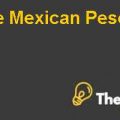
Brazilian Economy and Real
Brazil is located on the central east coast of the continent of South America and is considered to be the largest country, occupying nearly half of the continent. It has twenty six states and one federal district with the capital named Brasilia. Due to its vast land territory, the country is also sub-divided into five different regions that are North, Northeast, South, Southeast and Center-West. Brazil is considered to be the fifth largest country by geographical area around the globe and the fifth most populated country in the world as per recent census conducted.
Brazil's currency unit is the real, written using the symbol R$, although the currency’s exchange symbol for the real is BRL as used in international exchange markets. The real seems to be relatively stable for Brazil since its inception in 1994. The rapid inflation of the early 1990's caused great problems for the economy, but after which it was controlled and became stable against the major currencies of the world.
Brazil can be characterized by huge and well-developed manufacturing, mining, agricultural, and service sectors. Brazil's economy seems to be outweighing all of the other South American countries, and it is expanding its presence in various world markets. Brazil has gradually improved its macroeconomic environment, maintaining their foreign reserves, and minimizing its debt profile by transferring its debt burden toward real denominated and nationally held instruments.
Major Trading Partners and Currencies
Brazilian economy has been trading with several countries around the world with its major partners like, China, Argentine, USA, Japan, Germany, India, etc. These countries are mainly the importing countries that use the products manufactured in Brazil. Even after the global crisis of 2008, Brazil was one of the first emerging markets to cater these crises and recovered from the recession (www.brazil-help.com).
Considering the trends of Brazilian Real as compared to US dollars, being one of the major currencies, the rate slightly dropped at the inception of the year 2014, although its world price index (WPI) fluctuated with slight deviations. But during the second half of the year, the exchange rate seemed to rise drastically against US dollars as the world price index was also rising during that time. Therefore, the exchange rate for Brazilian real was initially around R$2.15/$ while by the end of year it went up to as high as $2.93/$ in 2014. The reason for this change in real was mainly due to the depreciation of the currency in relation to deteriorating reserves of the Brazilian economy which has greatly moved from a trading surplus to deficit in the last few years (Bergen).
Determinants of Exchange Rate
There can be so many determinants that can bring changes to any exchange rate, such as real. These can be government actions and interventions, macroeconomic factors, future expectations about the currency’s exchange rate, etc. These can be further analyzed in detail and what factors caused the most change in Brazilian exchange rate over the past year.
Time Line or Events
Time line or events refer to the special occurrences that arise unexpectedly and can affect the economy undesirably for longing effects. Similarly, Brazil also faced such events, along with all other economies in the world; however, Brazil was able to cope up with these events in a short span of time.
However, in previous years, the economy was facing hard times in terms of growing inflation rates as well as the population of the company. Although the gross domestic product (GDP) for the year slightly dropped, however, the growth rate of economy showed that the economy grew at faster rate as compared to the previous one. However, reliance on the imports, increasing inflation and interest rates led to changes in the exchange rate in terms of US dollars.
Government Actions / Interventions
Government is one of the major players of the changes in exchange rates, as the government’s policies, such as, fiscal policy and monetary policy and its timely actions during the fiscal year result in the changes in exchange rates of the economy (Factbook, 2014).
Historically, Brazil has high interest rates, which have made it an attractive economy for investors all around the world. High capital inflows over the last several years have come up with the appreciation of the currency due to the increase in its demand for investors converting their domestic currency into Brazilian real. In accordance to this, the government’s monetary policy of having high interest rates which attracts savings from all over the world is substantially sound as compared to other countries..................
This is just a sample partial case solution. Please place the order on the website to order your own originally done case solution.












